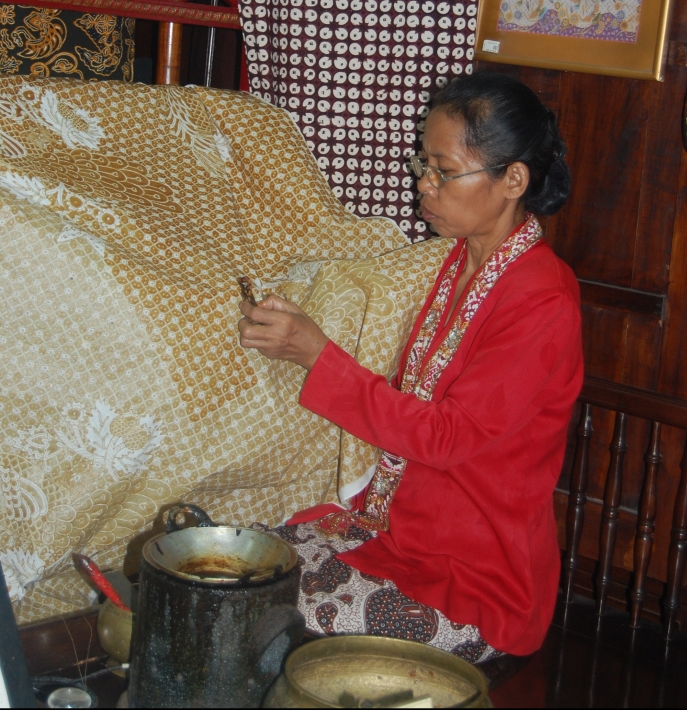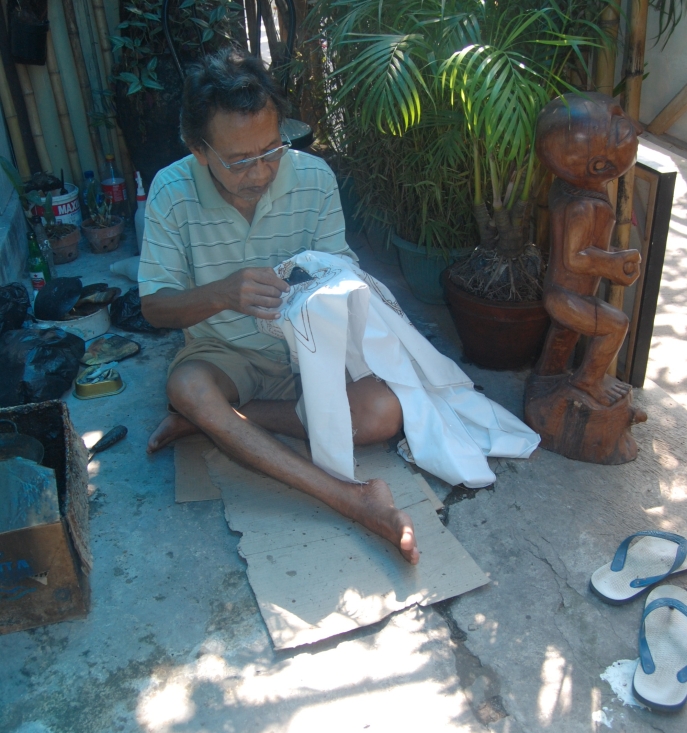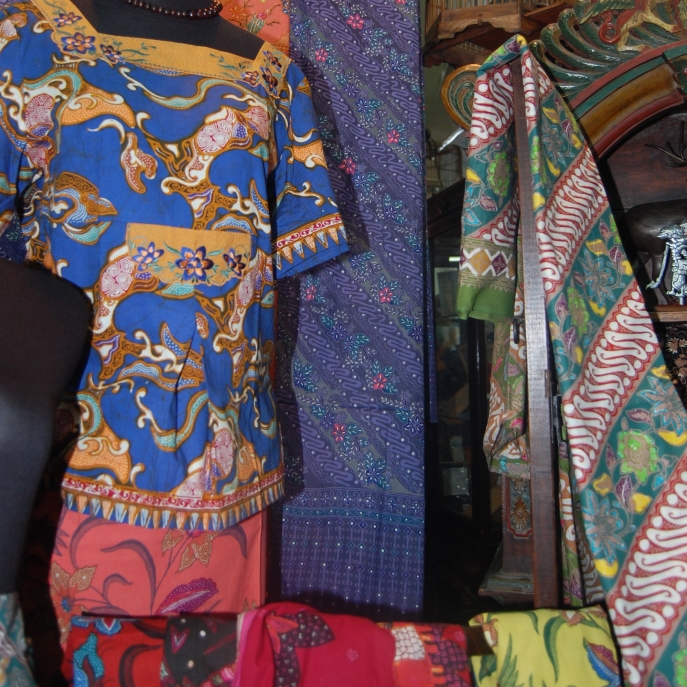Batik is a pan-Southeast Asian artform often associated with Muslim communities. It is a technique that involves wax-resist dyeing on a cloth, where the artist applies wax, following a desired pattern, through an instrument called canting. This is done prior to soaking the cloth to a dye solution in order to achieve color/s. The wax is then melted later on with hot water, revealing the difference between the dyed and the undyed portions. The appeal of this traditional art has become so influential and far-reaching that it has successfully found a place in mainstream fashion.

A batik master artist from Mirota Batik shop in historic Jogjakarta

A male batik artist spotted in the village inside the Jogjakarta Kraton (palace complex)
Indonesian Batik is considered to be the best, and it has been inscribed as a Masterpiece of Oral and Intangible Heritage of Humanity by UNESCO in 2009. It utilizes various motifs and inspirations not only from Islamic designs but also from Hindu-Buddhist, European, Chinese and even local ones, illustrating the cultural syncretism manifesting in the country.

Various Indonesian Batik on display in one of the cloth shops along Malioboro street in Jogjakarta center.
As with other heritage textiles, the batik also plays an important role throughout the entire life cycle of an Indonesian, from life to death, making it a truly national icon. Every October 2nd, Indonesia celebrates “Batik Day”, commemorating the momentous day that the Indonesian Batik was added to the prestigious list.
